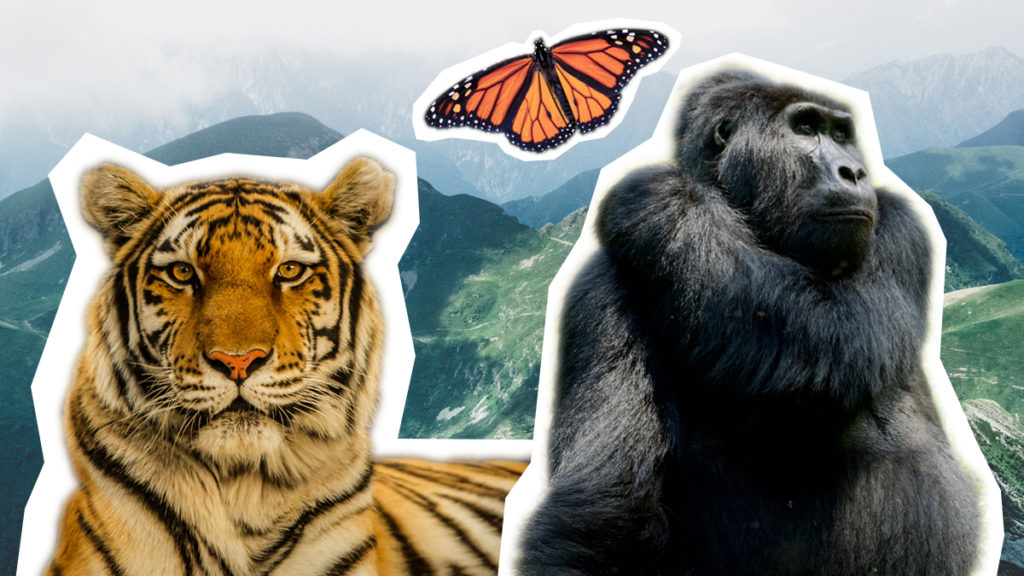Volcanoes are erupting in The Philippines, but on-fire Australia received some welcome rain. The Iran war cries have been called off and The Donald’s military powers are about to be hamstrung by the Senate. Meanwhile, his impeachment trial is starting, and we’re all on Twitter for a front-row seat.
13 Animals That Made a Comeback in 2021
These species rebounded from endangerment, reappeared after centuries, and defied declarations of extinction this year.
We thought tentacled butterfly rays had been goners since the 1980s, until they suddenly started showing up in Iranian fishermen’s nets. Sea lions, pushed out of New Zealand over hundreds of years by hunters, have now returned, gate-crashing soccer games and community pools.
While these two particular comebacks are more mystery than method, several of the animals in the list below have been saved from extinction this year through deliberate intervention and effort. There is an obvious blueprint across countries and species: curtailments of hunting, the establishment of refuges and reserves, and creative solutions for when animal and human priorities don’t align. These success stories show that we are capable of reversing the harms our activity has caused the animal kingdom, with the right focus and energy.

1.
Who: Burrowing parrots
Where: Chile
Lowest number: 217
Current population: 4,478
What did it: Thirty-five years of conservation efforts, including a national reserve that protects the birds’ food sources.
Fun fact: “Burrowing parrots got their name because they form colonies and dig their nests in ravines or hillsides along river basins and water bodies,” reports Mongabay.
2.
Who: Tentacled butterfly rays
Where: Iran
Last time someone saw one: 1986
Current population: Unknown
What’s next: We thought the tentacled butterfly ray had gone the way of the dinosaurs, until they started turning up in fishermen’s hauls in Iran. The area may be the ray’s “last stronghold,” reports Hakai Magazine. Conservationists are now searching for methods that would prevent the rays from getting swept up in fishing trawls.
3.
Who: Tigers
Where: Nepal
Starting number: 121
Current population: 240
Next goal: 250
What did it: In 2010, Nepal, along with 12 other countries that are home to wild tigers, agreed to double the number of tigers by 2022. While only Nepal achieved the goal, by cracking down on poachers, China, too, is making some progress.

4.
Who: Monarch butterflies
Where: United States’ West Coast
Lowest Number: 2000
Highest: Millions
Current population: 50,000
What happened: The butterflies’ recovery is not a done deal, but this year’s higher count of Western monarch butterflies is surprising and delighting scientists, who thought there was a chance the butterflies had disappeared forever. Their numbers have declined 99% since the 1980s as more and more housing destroys their habitat, along with other reasons. This year has bought butterfly conservationists time to develop a plan.
5.
Who: Black-browed babblers
Where: Borneo
Years missing: 172
What’s next: No one currently alive had seen the black-browed babbler before 2020, when two walking enthusiasts spotted a babbler in their local woods and alerted scientists. Further research is being conducted so as to assess the need for conservation efforts—it’s possible the babblers have been doing just fine on their own, away from human observation.
6.
Who: Wildcats
Where: The Netherlands
Current population: Unknown, but increasing
What happened: The cats scarpered off to what is now Germany and Belgium in the Middle Ages because of hunters and forest clearance. But rewilding projects have renewed their habitats, and feeling cooped up in their current part of the woods, the wildcats are returning.
Fun fact: Their population will be counted in 2022 using tree-mounted cameras.
7.
Who: Sea lions
Where: New Zealand
Current population: 10,000
What happened: The lions fled New Zealand’s hunters to the nation’s safer outlying islands. Now they have decided to migrate back, popping up at soccer games and pools and forcing New Zealanders to adopt a human-seal integration plan.
8.
Who: Dama gazelles
Where: Tunisia, Morocco, and Senegal
Current population: 4,000
What happened: In 1970, a Spanish researcher organized a rescue operation of the gazelles, which were being hunted to extinction in the Sahara. Airlifted by military planes to a Spanish farm refuge, their numbers recovered over the years, and now the animals are being reintroduced to their native lands.
9.
Who: Snail darters
Where: United States
Endangered since: 1975
What happened: The Tennessee River-dwelling fish just got moved off the Endangered Species list after being transplanted to other rivers and its original home given an oxygen boost. The Endangered Species Act has led to the saving of this fish as well as the humpback whale and the bald eagle, but over 1,500 species remain on the list.
10.
Who: Coral
Where: Australia
What’s next: After a year and a half in a “recovery phase,” the coral of Australia’s Great Barrier Reef fertilized billions of offspring this year in a days-long spawning event. Two-thirds of the reef’s coral had been “bleached,” an effect from warm ocean temperatures that left the coral vulnerable to starvation.

11.
Who: Mountain gorillas
Where: Democratic Republic of Congo, Rwanda, and Uganda
Lowest number: 620
Current population: 1,004
What happened: Pre-millennium, we thought the gorillas would be extinct by 2000. Instead, intense conservation efforts have led to the gorilla population increasing for the first time since the early 20th century.
12.
Who: Manatees
Where: Amazon River
Current population: Impossible to count
What happened: We traumatized manatees so much with hunting between the 1930s and 50s that they “learned to hide from humans, leaving only their nose sticking out of the water to breathe,” reports Mongabay. The result? It’s almost impossible to know how many are living in the Amazon River, but scientists and locals are seeing signs that point toward their recent flourishing, thanks to a reserve and laws banning the sale of manatees.
13.
Who: Egyptian vultures
Where: Yemen
Current population: Somewhere between 1,900 and 2,560
What happened: The Egyptian vulture was declared endangered in 2007, the majority of its Indian contingent “poisoned by livestock carcasses laced with the veterinary anti-inflammatory drug diclofenac,” reports bioGraphic, in addition to population drops in Europe and Africa. But they are thriving today on a Yemeni island where islanders rely on the birds as natural waste disposers.
Fun fact: The local word for the birds translates literally to “garbage bin.”
Honorable mention:
These capybaras, who are taking back Argentina for themselves.


